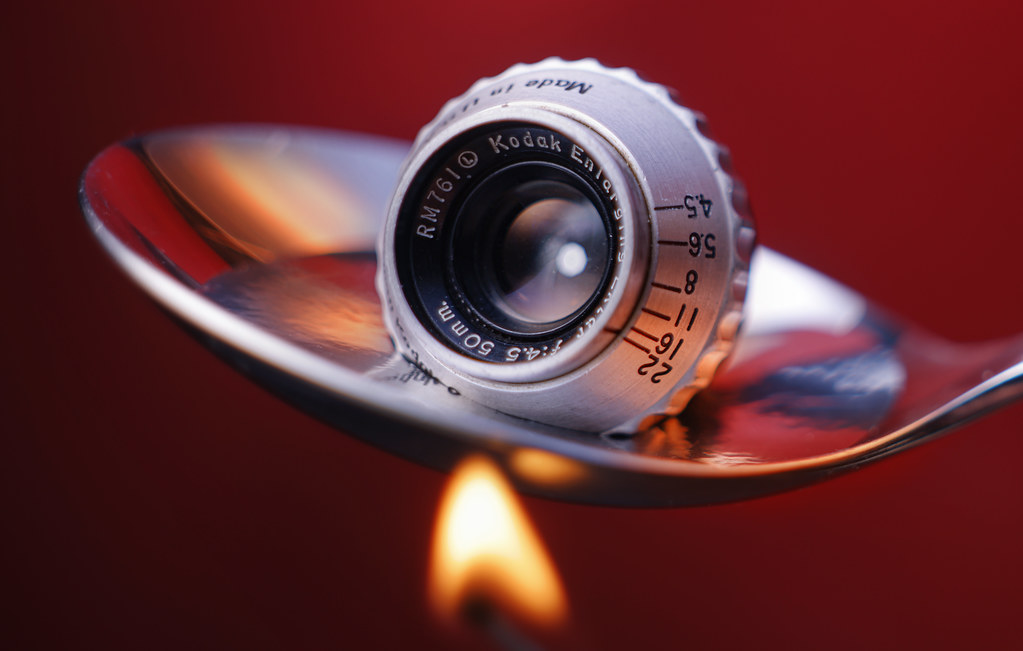I usually browse the original DPR adapted lens forum since at times one may gather insights in formerlky unknown optical marvels-
Today I found a piece on how people had come to use unoriginal optics and a discussion on how EFmount lenses would sink in price. I was inspired to post the following recount of my transition from analog to digital while using a library of adapters and lenses. It ocurred to me that this might also be of interest here, hence this copy:
I expect that EF optics will find a home on Canons new mount, so the companmy will compete with its own past.
Inspired by the above tales of camera and lens cjhanges: here is a tiringly long account of my experience:s
I did not beiiieve that Kodachrome and Velvia could be surpassed by digital devices (and still enjoy old snaps projected 6foot wide-)
BUT then tried a tiny Fuji thing and found that it provided interesting pictorial records at near zero cost. So I stopped using C41 colour films and printed via computer rather than going to the minilabs, while staying with Ilford XP for B&W. (having long given up developing and enlarging Panatomic and FP3-)
Eventually I tried a full frame Canon mount Kodak with some of Canons optics and found both the 28mm and a 20-like reasonably good . A wide to telezoom (28-135?) was surprisinly bad. .Above 400 ASA the Kodak had terrible noise so it had to be retired-
Since I had canon-mount lenses the Kodak was replaced by a Canon something which was VERY much better at anything above 200ASA and a manual focussing screen, but did not have the excellent colour management that the Kodak rawfiles provided.
After one plastic lens fell apart and a number of my snaps with autofocus turned out to be sharp at the wrong point, I decided that I did not need more junk optics and bought some Leitz R lenses that were reasoan\bly cheap at that time (Wild/Kern et al . had decided to abandon the Rseries). And double luck; not only the lenses were good buys, but they could be easily adapted to Canon . I had never been particularly interested in Exif data so no need for chipped adapters-
Later on I found that the little "half frame" Olympus Pen F would lake just any lens one might wish to use, and would fit in a pocket if fitted with a compact lens (like the "voigtlânder" 25mm) , The penF would also use my Leitz M lenses so for travel I could just keep the thin teleElmarit in another pocket.
With time I ignored the compactness advantage , got a library of adapters and put my old Alpalenses to work plus some of the MFT olympus stuff. Metabones speedboosters were useful for dim but sharp lenses, For speed . however I could use some of my anciant C mount lenses Like the Schneider 50/0,95 that I had modified to fit. The trick for getting higher resolution through 4-slighly offset exposures worked well if the camera was solidly mounted, but I wished for higher resolution (allowing enlargement and cropping) without having to press buttins and twiddle dials.
On the MFT , the focus poit that determined where spotmetering took place had a tendency to move on its own . So I got rid of the entire MFT equipment and got a Nikon Z7 with an EF to Z adapter allowing the use of all my old lenses (except the Canon auto ones and the Alpa mount ones) . Wth another adapter It also acommodatet my Leica M lenses .
The Z is an extremely well focussing (100/% enlargement)and robust device (surviving rough treatment) whose only major fault besides excessive bulk and some useless features is that its focussing and spotmeteringh point also moves erratically
p.


